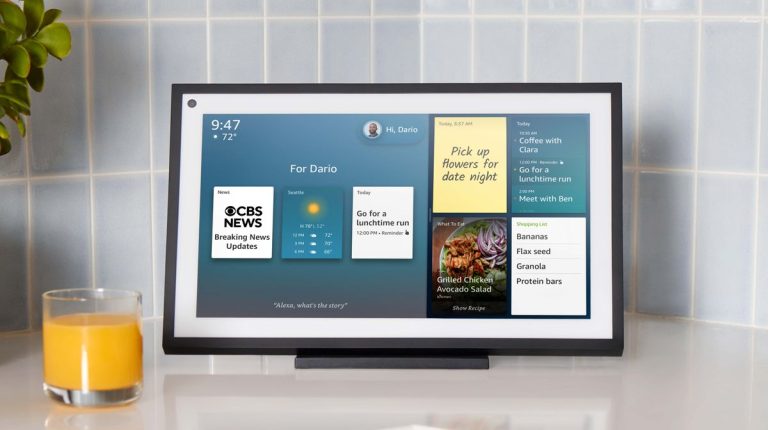A well-designed and well-thought-out smart home should make your life easier, but we often hear stories of smart home dreams turning into nightmares, with systems that don't work as advertised or are so tedious that they end up being abandoned.
A lot of this can be avoided with a little foresight when building your smart home. With that in mind, here are some key mistakes to avoid in 2024.
1. Useless WiFi

(Image courtesy of Google)
The first thing to keep in mind is that, like all wireless technology, the performance of each modular smart home component is only as good as the Wi-Fi in your home.
This is more a matter of congestion and range than speed – having too many things sharing the same frequency can cause reliability issues, and anything placed within a Wi-Fi “non-spot” will face reliability issues.
Before you start your smart home journey, we highly recommend that you fix your WiFi once and for all. If things are shaky, consider getting one of the best Wi-Fi routers that can manage your home traffic more efficiently, rather than relying on the cheap, flimsy router that comes with your broadband.
If there are areas in your home where you don’t have signal coverage, consider a range extender, or even better, a full mesh WiFi solution that can cover your entire residence.
2. It doesn’t take into account your specific situation
Many smart home components, such as smart speakers, smart light bulbs, and smart plugs, are designed to be mobile, while others are designed to be more permanently installed.
Installing a video doorbell or smart cat door is a lot of work, so if you're a homeowner, ask yourself if there's a chance you'll move in the next few years. If you're renting, make sure you have permission to do any DIY-like work, and that it's a long-term undertaking.
If you decide a big DIY project isn't up your alley, don't worry too much: There are plenty of things you can move easily and there are alternatives to a big project. For example, a few years ago, Amazon-owned Ring developed a video doorbell for renters that sits over the peephole.
3. Not choosing the right ecosystem for you

(Image courtesy of Ring)
Most smart home products aren't too picky about which ecosystem they belong to, but if you have a particular must-have item in mind, make sure it's compatible with your ecosystem of choice, be it Amazon Alexa, Google Home or Apple HomeKit.
This is especially important when it comes to video doorbells: Nest is owned by Google and works well with the Nest Hub smart screen, while Ring is owned by Amazon and similarly favors the Echo Show panel. Some features may work across devices, but not all. And honestly, it's not worth the headache.
4. Don't build in stages
The beauty of building a smart home is that you can do it in stages. In fact, it's better to take it slowly and methodically.
Not only does a phased approach relieve the pressure to cut costs, it also gives you the time to take your time to learn the ins and outs of each component. Building slowly also helps you avoid overloading your WiFi.
So, we recommend starting with simple essentials that provide real, tangible benefits, like smart lights that change color on command or a smart thermostat that automates your heating to save you money on your energy bill.
5. Missing out on the latest news

(Image courtesy of Level)
Smart home technology can make your life easier, but it can also expose you to a variety of security risks. While no one can remotely hack a traditional deadbolt, it is theoretically possible with a smart lock.
On the flip side, network-connected technology is updatable, and major manufacturers often push firmware updates to devices that plug security loopholes, fix minor bugs, or add new features.
Not using it puts you at risk, so check back regularly to see if there's anything you need to download to keep everything running smoothly. Most devices have auto-update settings so you can outsource this to the device itself, but if you do it manually, you can examine the contents of each update to see if it's one you really need.
6. Buy parts cheaply
If you're buying a lot at once, it can be tempting to choose the cheapest option that offers the same features, but smart home tech has dropped in price so much that it might actually be a good deal.
But there are risks here, and they mainly relate to the security point mentioned above: if you buy a no-name smart home component, the chances that the company will take security seriously or provide long-term support are significantly lower.
While you might try your luck with a smart light bulb or two, we don't recommend buying cheap smart locks or security cameras — after all, if companies don't fix security flaws quickly, your home's security is at risk.
Even if you choose to ignore this warning, you should at least change the default password to something secure: if users don't take the time to change “admin” to a unique password, smart home technology can be hacked remotely with relative ease.
7. Not making it available to everyone in the household
Setting up a smart home is often a personal project with one person taking the lead on purchasing, installing, and maintaining the smart home. However, if you live with others, it's important that they can actually use the technology, too.
That could be as simple as having them install the app and showing them how everything is controlled, but if you're not tech-savvy, you might want to connect each of your smart devices to a smart speaker so you can easily control them by voice.
Even better, invest in a smart home control panel like the Amazon Echo Hub. Make it easily accessible and teach the people you live with how to use it so everyone can benefit from the smart home upgrades you put in place.
Today's best Google Nest Hub Max deals

